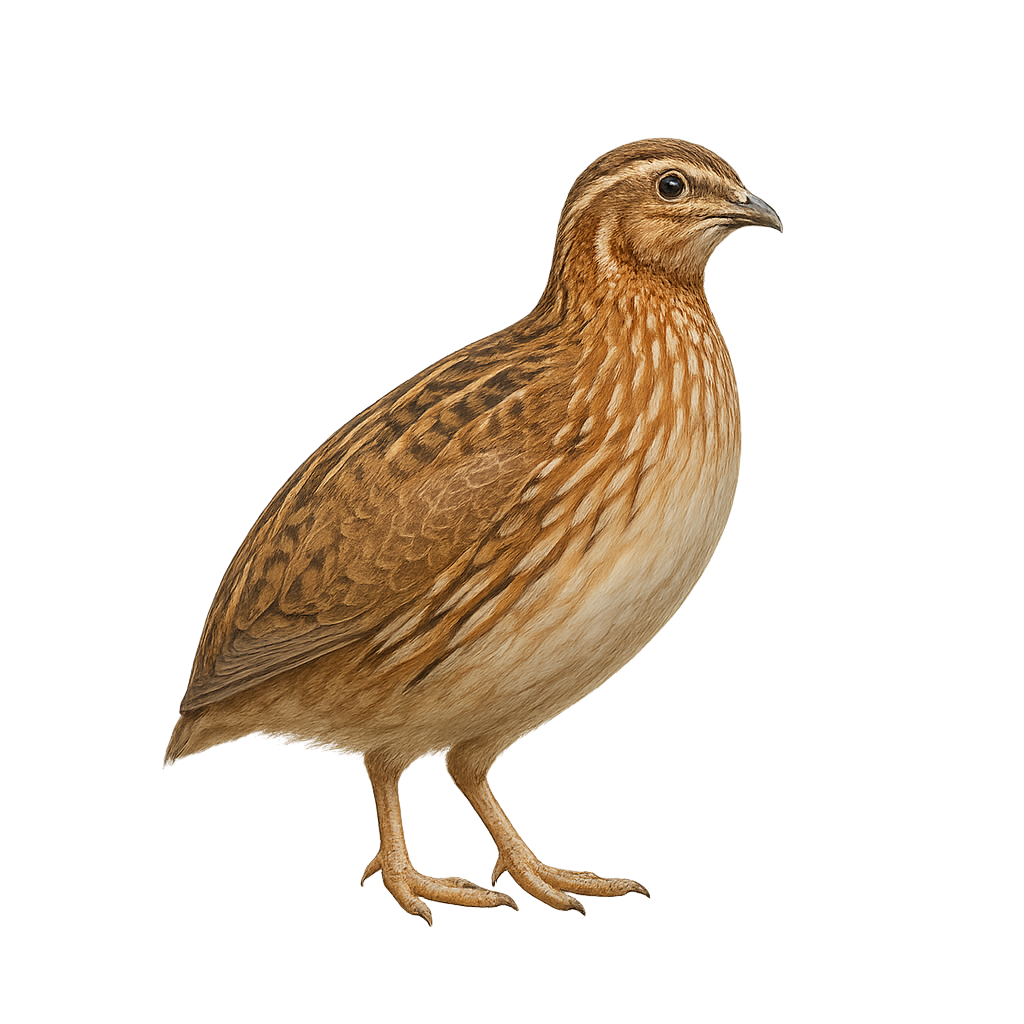Observe and photograph a species in its natural habitat
Learn where and when to observe a species in the wild, how to recognize it in the field, and what habitats it lives in. Get photography tips adapted to its behavior and capture stunning images without disturbing the animal. For full details, open the complete profile in the WildlifePhotographer app.
Quail
Scientific name: Coturnix coturnix

IUCN Status: Least Concern
Family: PHASIANIDAE
Group: Birds
Shyness: Suspicious
Safe distance: 30 m
Breeding season / Courtship: 01.05-30.06
Gestation: 16 à 18 jours
Births: 17.06-18.07
Habitat:
Meadows and farmland
Description:
The Common Quail is a small, ground-dwelling bird, easily recognizable by its striped brown plumage and small size. It primarily inhabits fields, meadows, and open agricultural areas, where it blends perfectly into the vegetation. This bird is mostly terrestrial, spending much of its time running through tall grasses rather than flying. When it does take flight, it is usually quick and short, a strategy to escape predators.
The Common Quail is migratory, leaving its breeding grounds in Europe and Asia to travel to Africa during the winter. Its population is declining in some areas due to habitat loss, intensified agriculture, and hunting. Despite these threats, conservation efforts have been implemented to stabilize local populations.
Recommended lens:
>=300 mm
Photography tips:
Approach slowly and discreetly, using a telephoto lens to avoid disturbing the grey partridge, a small shy bird often hidden in fields or tall grasses.
Photograph early in the morning or late in the afternoon, when the light is soft and the grey partridge is more active, often feeding or moving quietly.
Capture moments of natural behavior: The grey partridge is often seen on the ground, searching for food. Wait for moments when it is more visible without disturbing its natural behavior.
Be patient and respectful: As a discreet bird, the grey partridge can easily be disturbed. Stay quiet and wait for a moment when it moves or rests in its natural environment.
The grey partridge is a vulnerable species due to habitat loss and intensive agricultural practices. It is essential to respect its natural environment, not disturb its feeding or nesting behaviors, and follow local conservation rules to preserve this species.
Ready to take action?
Choose your platform and start your free trial today



